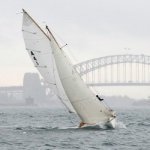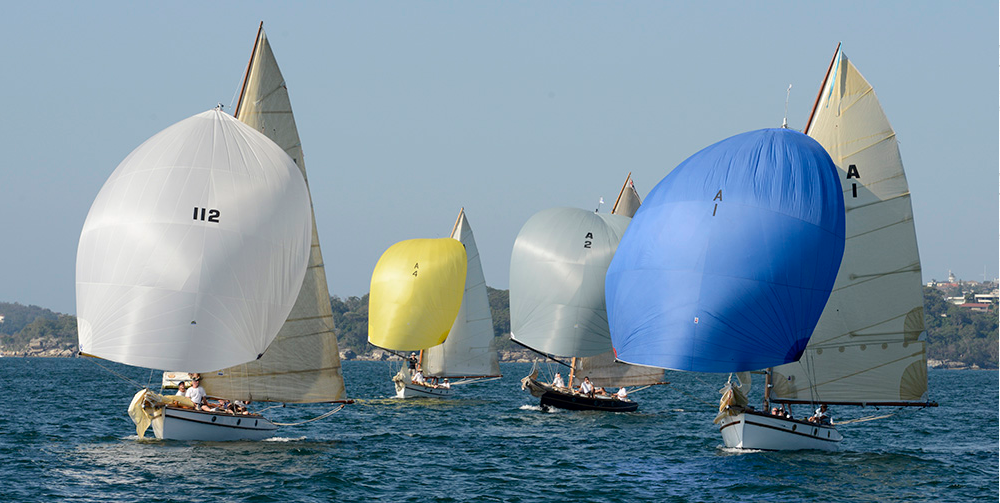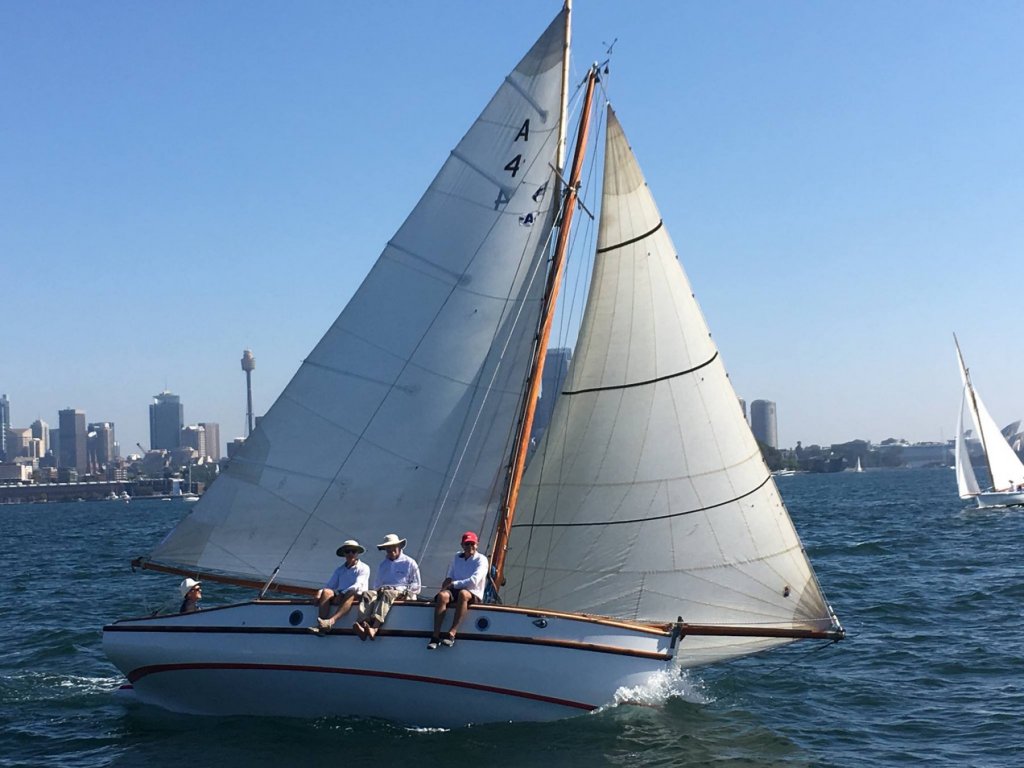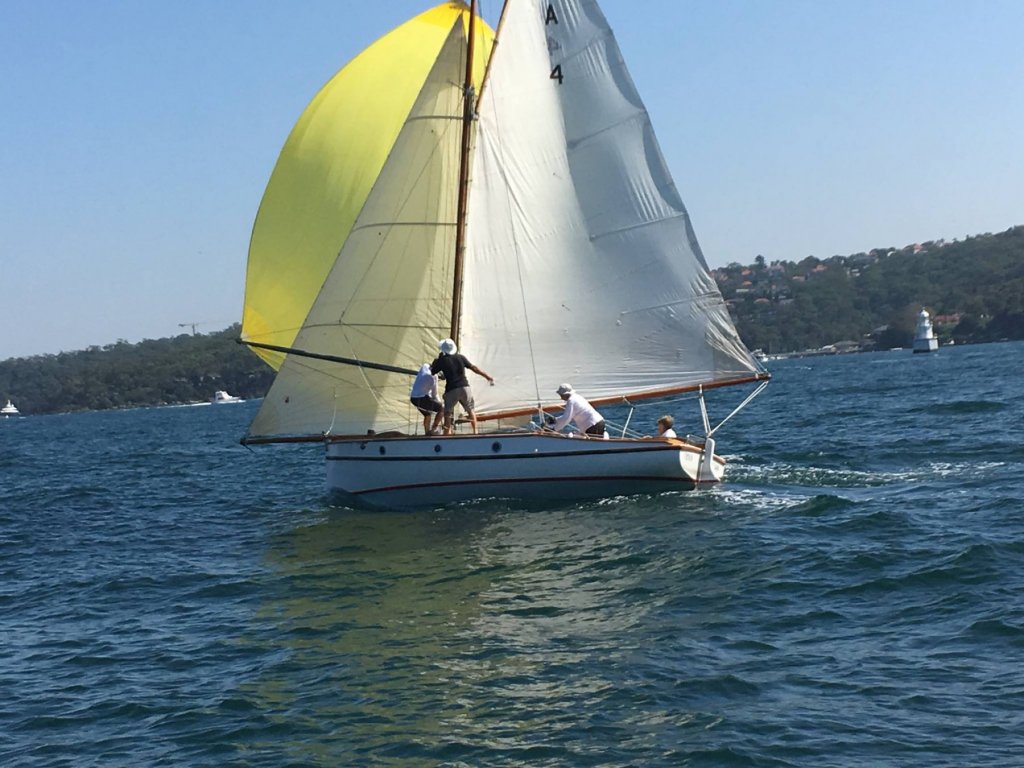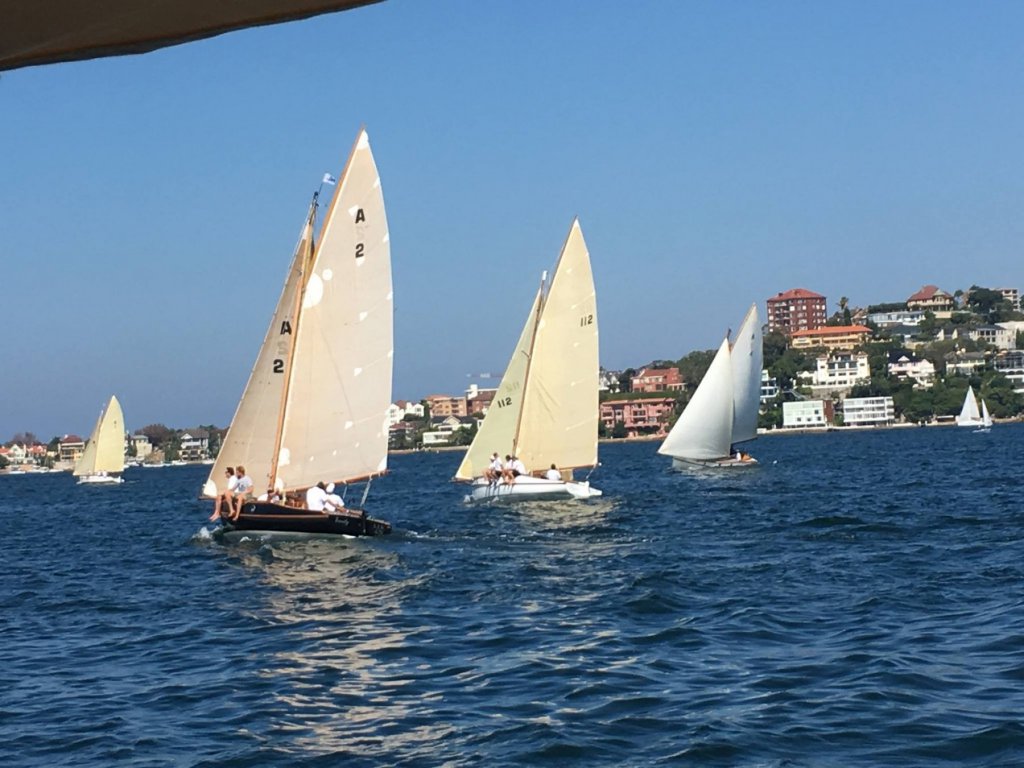-
Posts
820 -
Joined
-
Last visited
Content Type
Profiles
Forums
Gallery
Events
Everything posted by Mark Pearse
-
Hi Vaddoc more nice work. Could you explain a bit about the comment below? thanks Also, you might already know - but esp on a yacht it's important that the waterline isn't painted dead horizontal, whether just a change in colour or a boot top line. A shipwright explained it: lowest point aft of the centre of the hull about 40%/60% of the hull length, raising towards the bow & stern, & finishing higher at the bow. If it's a boot top line it should also get a bit thicker in the same way. For a yacht that's 30 foot long it's around 2 to 3" difference between the lowest & highest point. You don't actually notice it, but I'm told that you notice it if you don't do it, it appears to curve downwards towards each end. Just when you thought it was complex enough.... maybe the advice is wrong though,
-
thanks, I made the forward sail tracks tonight & they were surprisingly easy - a classic T track from a wider piece of brass soldered on top of a narrower piece, in this case the narrower is from two very small squares - as that's what I had & the size is good. Full size for the track is about the standard size 32mm or I guess that's 1 1/4" imperial. There will be longer tracks further aft on the deck, a #1 headsail on this boat would probably have the clew about 2' or 600mm from the edge of the raised deck. I'd like to drill some shallow holes along to give some texture & replicate the car stop holes, but it seems that the drill bits I have get blunt very quickly. I'll see if I can get a tungsten tip one from the local hardware store, anywhere from 0.5mm to 0.8mm or so would do, about 6-10mm diameter full size. In the photos they tracks are in the approx position, just sitting there. I'll colour them also.
-
I haven't been working enough on the model yacht, but some recent progress: the boom is done with thumb cleats each side & the gooseneck fitted, plus the fitting on the cap iron on the end of the boom is done also. The boom really sets the hull lines off. Some other minor bits: the running backstay chainplates are done. They will be mounted on the sides at the step in the deck. I refined the shape of the cutwaters, they now taper down in height as they go further aft. (they are angled boards on the deck). And I've been looking at some fairly cheap brass blocks, as below, & wondering how they can be improved.... I sanded off the knurled edges of the riveted axle (which wouldn't look great on a scale model), & good news is that the block didn't fall apart .... so ... the plan is to glue thin pieces of timber each side of the block to replicate tufnol, or timber. If I can sand the sides very flat I might be able to turn them into double blocks by gluing or soldering two side-by-side. thanks all ,
-
thanks, yes that is helpful & it's clearer now - a Lateener is new to me also. I just noticed the lateen spar is in two parts (in the sculpture), joined near the mast; which would account for some of the ropes shown around where they join.
-
Hi Steven could you explain for my benefit what you believe the rigging on the mast & sail would be for one of these craft? The bas relief sculpture shows quite a few lines (& furthermore - are they showing the mast being raised or lowered?). thanks
-
thanks Jack, that's very interesting. It's hard to imagine, but does the tiller kick a lot? A metal tiller with the unforgiving nature of ice... Also, it's fascinating to see that the sail shapes are so similar to the boats of the same period & yet the demands would be more different than it seemed at first glance - at the incredible speeds they go the apparent wind is almost always going to be well forward & strong to very strong, maybe even 50 or 60+ knots apparent. You'd not get that very often on the water & yet the sails & spars look like you could just drop them straight into a boat....They must be a blast to sail on.
-
Hi Jack I had to resolder some joints that had broken in a difficult position & managed to control the excess heat by using small pieces of wet rag wrapped around the bits I wanted to protect, & put the solid head on the flame torch. On the unusual main sheet system, I have some thoughts on why it's set up that way. It's effectively a double ended main sheet, so that the boom adjustment has either speed of adjustment or power. If you want to pull the boom in quickly & there's not much load you use the aft sheet, then when the wind load comes on you would use the forward tackle at 6:1 or whatever it is. You'd have to keep an eye on where the sliding block sat & not let it get too far forward or back, maybe there's a way of locking off the boom & resetting the position of the sliding block during a long leg. A question: on the actual ice yacht, what are the skids made from? thanks, Mark
-
Yes the deck would be a problem for pivoting - for lifting, if the mast was very heavy you could use a simple lever system below decks, & as it gets lifted - say each lever lifts the mast 20cm - you chock the mast to stop it falling back (or use ropes from above taking up the slack as it's lifted, the ropes going through the deck hole & tied off to some fixed strong point) & do it again. When the mast base clears the deck level you use the ropes to restrain it & do a controlled slide along the deck. It's starting to sound possible, but maybe that's too much optimistic imagination... BTW, I have a small amount of mast lifting experience, one solid timber one on a 17' boat & it was manageable by myself but quite difficult - a mere toothpick compared to your vessel. We also lifted a a 9.5m timber mast with an electric crane, it was hollow - a wall thickness of 1" & a diameter of 140mm - so probably only 50% of volume solid timber, so quite light for the size & much much slimmer than your Dromon mast would likely have been. I reckon it would be possible to lift one of these by hand - but only with some sort of mechanical advantage.
-
HI Vaddoc ....if the solder & aluminium doesn't work out, I wonder if there's a way of colouring epoxy to a silver or grey & glueing the aluminium?
-
I believe the mast step arrangement of a simple slot would easily be enough to hold the foot of a mast, provided the top of the mast is stayed. You mentioned that you doubted that the masts could be raised & lowered at sea - but I think it's possible in these craft (not because I know anything about the boats, I must add). To hold the base of a mast in place doesn't need to be complex, & I think that raising & lowering is possible because the boats are so long compared to the mast height. I would guess that they would pivot the masts (not lift) because it would be easier, & rigging lines to do that job would be simpler than what would be required to lift the masts up. In terms of the mast step, if the rectangular slot was long enough so the end of the mast could rotate as the mast swings, then there would be no impediment to it rotating - but it might not be stable enough. Possibly they had timber blocks that sat in the slot either or both sides of the mast, wedged to hold it all tight. If you want to lower the mast you'd knock the wedges & blocks out & the mast step would then it can rotate in the slot. I would hazard a guess that when lowering there would be a point at which the base of the mast came out of the slot, at which point you'd need a heavy rope controlling the base of the mast because there would be a lot of load pushing it. You'd need to control it with that rope & maybe even allow it to move along to be shipped where you wanted it in the hull.
-
Hi Steven - Just following the discussion with Pat, was it certain that the masts sat in raked holes? NB: I don't know anything about these craft.... Mark
-
Hi Bedford, good to hear from you. Yes we saw the Waratah over towards Kirribilli & I remember hearing the steam whistle. You're right, we were racing - there's two annual races Rangers vs Couta Boats. Very light conditions but great racing. Some photos below - our boat is A4. Mark
-
Hi Dick a beautiful model indeed, & the journey through history was fascinating. Now I can see that the drawings & paintings you posted examples of are quite accurate. Mark
-
Hi Jack fascinating. The link you put in early in the posts was amazing, it's one thing to know they are fast & another to see it (even on screen). I'm guessing they were just too fast for a spinnaker? There's a wire, or maybe a shroud, that looks like it goes full length below the main fore/aft frame - what does that do? Mark
-
Masts usually go through a deck or cabin roof, a king plank does a lot of work but it wouldn't take any of the downwards mast loads. The mast goes down to the keel & usually sits on a mast step there (basically a beam that spreads the mast loads), the last would likely just go through the cabin roof & deck & maybe/maybe not be wedged against them; the mast can be free to move around a bit within a gap of about 1". I'm not sure what the detail is in the UK to waterproof this joint, but traditionally it would probably have been some sort of canvas boot, tied off to the mast & also tied off over a raised edge around the cabin top/deck hole. Even for a model, I would make sure you support the mast load down to the keel whether or not the mast goes through the cabin, timber can slowly bend over time from ongoing loads, & maybe even put in a mast step the equivalent of about 1-1.5m long. I wouldn't think 3 shrouds would be necessary, it's not a large yacht, & if you do gaff rig they are lower stress than bermudian...but you would need running backstays as well as the two each side on the mast - a cap shroud & a lower each side. On the rig, I believe that a gaff cutter would be a good choice (an internet search showed that they were done in this rig), because the boat is probably heavy & it's a more powerful rig than the triangular Bermudian mainsail. A cutter rig because that rig is very popular in the UK & this is definitely a classic English design. Lastly, the gaff rig just looks so damn good....but this is just the opinion of an idle bystander. On the transom, it was also popular to put the boat name on a wooden plate (or two). If your model has a double name then it might work to use plates & cover the drill damage that way...just a thought. I hope this assists, & the ultimate decision should be yours
-
the deck looks very good Vaddoc, were you thinking of doing the transom clear finished? I did an internet search to see what the rig is, & there seems to be a number of alternatives....what are you thinking? Mark
-
The main parts of the standing rigging are done; and the gammon iron is done & installed. The gammon iron is probably not accurate to reality, it has no bow rollers for anchoring etc. This is the point at which I want to separate the point of this model from doing a fully accurate model of a yacht. I won't be doing fairleads, bow rollers etc, the important part of this model is to realistically show the last yacht design by Cliff Gale, and some of the minor details will not be necessary. Partly this is because the details on a model seem to be more visible than on a real yacht, so in a way not doing them is trying to keep the focus on what I think are the most important parts - hull shape in particular. So, the mast bowsprit & standing rigging: Some of the rigging details, shrouds chain plate connections: Gammon iron: Mast cap from bow starboard side Mast cap seen from the stern side. The small rings will take the running backstays & the empty cleat is for the peak halyard. The spreaders:
-
Hi Russ I have found the Tamiya masking tape for model making use to be superb.
- 420 replies
-
- captain roy
- lugger
-
(and 2 more)
Tagged with:
About us
Modelshipworld - Advancing Ship Modeling through Research
SSL Secured
Your security is important for us so this Website is SSL-Secured
NRG Mailing Address
Nautical Research Guild
237 South Lincoln Street
Westmont IL, 60559-1917
Model Ship World ® and the MSW logo are Registered Trademarks, and belong to the Nautical Research Guild (United States Patent and Trademark Office: No. 6,929,264 & No. 6,929,274, registered Dec. 20, 2022)
Helpful Links
About the NRG
If you enjoy building ship models that are historically accurate as well as beautiful, then The Nautical Research Guild (NRG) is just right for you.
The Guild is a non-profit educational organization whose mission is to “Advance Ship Modeling Through Research”. We provide support to our members in their efforts to raise the quality of their model ships.
The Nautical Research Guild has published our world-renowned quarterly magazine, The Nautical Research Journal, since 1955. The pages of the Journal are full of articles by accomplished ship modelers who show you how they create those exquisite details on their models, and by maritime historians who show you the correct details to build. The Journal is available in both print and digital editions. Go to the NRG web site (www.thenrg.org) to download a complimentary digital copy of the Journal. The NRG also publishes plan sets, books and compilations of back issues of the Journal and the former Ships in Scale and Model Ship Builder magazines.


